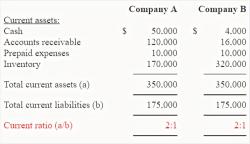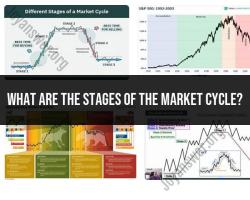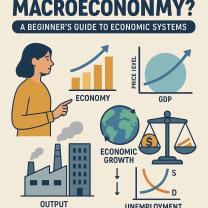How to find high yield stocks?
Finding high-yield stocks, also known as dividend stocks, involves a combination of research, analysis, and careful consideration of your investment goals and risk tolerance. Here are some strategies to help you find high-yield stocks:
Screening Tools and Websites:
- Use online stock screening tools and financial websites to filter and identify stocks with high dividend yields. Websites like Yahoo Finance, Google Finance, and dedicated stock screeners allow you to set specific criteria, including dividend yield, to narrow down your options.
Dividend Aristocrats and Achievers:
- Consider investing in dividend aristocrats or dividend achievers. These are companies with a history of consistently increasing their dividend payments over several years. Lists of such companies are available from reputable sources, such as S&P Dow Jones Indices.
Dividend ETFs and Funds:
- Explore dividend-focused exchange-traded funds (ETFs) and mutual funds. These funds invest in a diversified portfolio of dividend-paying stocks. Look for funds that target high-yield dividend stocks or have a track record of generating consistent income.
Dividend-Tracking Websites:
- Visit websites that track dividend-paying stocks and provide information on dividend history, payout ratios, and yields. Examples include Dividend.com, Seeking Alpha, and Nasdaq's Dividend History.
Financial News and Publications:
- Follow financial news and publications that regularly feature articles and rankings of high-yield stocks. Investment magazines, newspapers, and financial websites often provide insights and recommendations.
Stock Research and Analysis:
- Conduct in-depth research and analysis of individual stocks. Look for companies with strong fundamentals, including stable revenue and earnings growth, manageable debt levels, and a history of generating consistent cash flow to support dividend payments.
Industry and Sector Trends:
- Consider industry and sector trends that may influence the sustainability of dividend payments. Certain sectors, such as utilities and consumer staples, are known for their stable dividend-paying companies.
Dividend Payout Ratio:
- Assess the dividend payout ratio, which is the percentage of earnings that a company pays out as dividends. A lower payout ratio suggests that a company has room to grow its dividends in the future.
Dividend Sustainability:
- Evaluate the sustainability of a company's dividend payments by reviewing its financial statements, cash flow, and dividend history. Look for signs of consistent or growing dividends, rather than high initial yields that may not be sustainable.
Diversification:
- Diversify your dividend stock portfolio across different sectors and industries to reduce risk. Avoid putting all your investments into a single high-yield stock or sector.
Consult a Financial Advisor:
- Consider consulting a financial advisor or investment professional who can provide personalized guidance and recommendations based on your financial goals and risk tolerance.
Remember that high-yield stocks can be more volatile and may carry higher risk than lower-yield alternatives. It's essential to conduct thorough research, assess the company's financial health, and consider your own investment objectives before investing in high-yield stocks. Diversifying your investment portfolio and maintaining a long-term perspective can help manage risk while seeking income from dividends.
Hunting for High-Yield Stocks: A Guide to Finding Income Investments
High-yield stocks are stocks that pay a high dividend yield, which is the percentage of a company's share price that is paid out to shareholders as a dividend. These stocks can be a good way to generate income, but it is important to do your research before investing in any stock.
Income-Generating Investments: Strategies for Identifying High-Yield Stocks
Here are some strategies for identifying high-yield stocks:
- Look for companies with a long history of paying dividends. This shows that the company is committed to returning money to shareholders.
- Consider the company's dividend yield. The dividend yield is calculated by dividing the annual dividend per share by the current share price. A higher dividend yield means that the stock is paying a higher percentage of its share price as a dividend.
- Evaluate the company's financials. Make sure that the company is financially sound and can afford to continue paying dividends. You can do this by looking at the company's balance sheet and income statement.
- Read analyst reports. Analyst reports can provide you with insights into the company's financial health and future prospects.
Dividend Delight: Uncovering High-Yield Stocks in the Market
Here are some sectors of the market where you can find high-yield stocks:
- Utilities: Utility companies typically have a long history of paying dividends and offer relatively stable earnings.
- Real estate investment trusts (REITs): REITs are companies that own and operate income-producing real estate. They are required to pay out at least 90% of their taxable income to shareholders as dividends.
- Consumer staples: Consumer staples companies sell products that people need to buy regardless of the economic climate. This can make them a good choice for investors looking for reliable dividend income.
It is important to note that high-yield stocks can be riskier than lower-yielding stocks. This is because companies that pay high dividends often have less room to grow and may be more vulnerable to economic downturns.
Before investing in any high-yield stock, it is important to do your research and understand the risks involved.
Here are some additional tips for investing in high-yield stocks:
- Diversify your portfolio. Don't put all your eggs in one basket. Spread your money across a variety of different stocks to reduce your risk.
- Reinvest your dividends. This will allow you to compound your returns and grow your wealth over time.
- Hold your investments for the long term. High-yield stocks can be volatile in the short term, but they have the potential to generate significant returns over the long term.
If you are looking for income-generating investments, high-yield stocks can be a good option to consider. However, it is important to do your research and understand the risks involved.












